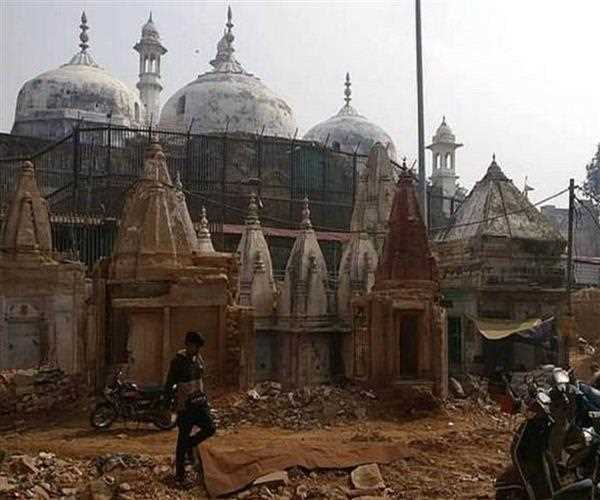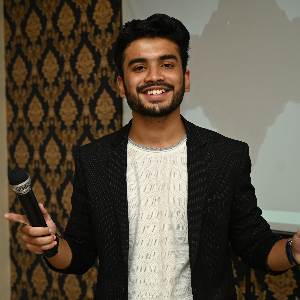Search here

14-Dec-2021
Controversy over the Gyanvapi Masjid, Varanasi
The Gyanvapi Masjid in Varanasi, which is contiguous to the Kashi Vishwanath Mandir, is at the focal point of a complex legitimate battle. A court in Varanasi requested the Archeological Survey of India (ASI) to examine the construction of the Gyanvapi Masjid.
Read Now- Inauguration of Kashi Vishwanath Corridor(Phase 1) by our Prime Minister
The Allahabad High Court, then again, set a between time stay on the Varanasi court's requests to the ASI on Thursday. Also, the Supreme Court is hearing various petitions identified with the Gyanvapi Masjid-Kashi Vishwanath Mandir struggle.
GYANVAPI'S CASE
This is an old case, first recorded in 1991 when a surge of petitions showed up at the Varanasi court. The applicants were nearby clerics who needed to venerate at the Gyanvapi Masjid.
The candidates guaranteed that the Gyanvapi Masjid was based on the sets of Mughal ruler Aurangzeb in the seventeenth century by eliminating a part of the Kashi Vishwanath Mandir.
HOW WAS THE GYANVAPI CASE REVIVED?
Vijay Shankar Rastogi, a Varanasi-based legal counselor, appealed to the lower court as the 'following companion' of the Kashi Vishwanath Mandir's directing god. In lawful language, a 'next companion' is somebody who addresses somebody who can't safeguard oneself straightforwardly in court.
The case was deferred and the consultation was stopped by the Allahabad High Court. In any case, the Gyanvapi case was returned in December 2019, a month later the Supreme Court's choice in the Ayodhya Babri Masjid-Ram Janmabhoomi proprietorship debate.
Candidate Rastogi requested an archeological study of the Gyanvapi Masjid for the god Swayambhu Jyotirling Bhagwan Vishweshwar. He contended that the Gyanvapi Masjid was assembled wrongfully.
In April of this current year, the Varanasi court requested a study of the structure of the Gyanvapi Masjid dependent on another becoming aware of Rastogi's appeal.
The Varanasi court requested the ASI to shape a five-part master panel to direct the review and present its report.
Rastogi's allure was gone against by the Uttar Pradesh Sunni Central Waqf Board and the Anjuman Intezamia Masjid Committee, which deals with the Gyanvapi Masjid.
They likewise protested the Varanasi High Court's choice for a study of the Gyanvapi Masjid.
THE HIGH COURT OF ALLAHABAD
The case was heard by the Allahabad High Court. Subsequent to hearing from the gatherings, the Allahabad High Court gave a break stay on the guidance to the ASI to play out the review on Thursday.
Read More- The Real Idea Behind 'Akhand Bharat'
The Allahabad High Court's visit choice depended on the Places of Worship Act, 1991. The standard precludes any adjustment in a position of love's strict nature from what it was on August 15, 1947.
The candidate contended in both the lower and higher courts that the 1991 Act didn't matter to the Gyanvapi Masjid since the Kashi Vishwanath Mandir was to some degree obliterated in the seventeenth century to clear a path for the mosque.
Indeed, even in the Ayodhya judgment, the Supreme Court board drove by then Chief Justice of India (CJI) Ranjan Gogoi alluded to the Places of Worship Act.
In its choice, the Supreme Court expressed that the Places of Worship Act was an 'administrative mediation' that shielded 'non-retrogression as a crucial part of our mainstream standards.'
Notwithstanding, in March of this current year, a Supreme Court seat drove by then Chief Justice SA Bobde consented to explore the legality of the Places of Worship Act.
It sent a notification to the focal government, mentioning a reaction to the lawfulness of the 1991 Act, which was presented by the PV Narasimha Rao government.
Later India's autonomy in 1947, the law successfully shut down all claims trying to recover any spot of love.
WHY IS THE GYANVAPI DISPUTE IMPORTANT?
During the mission for the Ram Mandir development at Ayodhya, the Bharatiya Janata Party (BJP), the Vishwa Hindu Parishad (VHP), and the Rashtriya Swayamsevak Sangh (RSS) all referenced the Gyanvapi Masjid issue.
The Shahi Idgah Masjid in Mathura was the third strict site. As indicated by the campaigners, the Shahi Idgah Masjid was worked by obliterating a sanctuary close to Lord Krishna's origination.
Read more- Syed Waseem Rizvi- Back to HOME
A different activity is being heard in a civil court in Mathura to recover the Katra Keshav Dev Mandir complex, which is the origination of Lord Krishna. In February of this current year, the Mathura court gave notification to the particular gatherings.
GYANVAPI MASJID: WHAT WE KNOW
As indicated by prevalent thinking, the Gyanvapi Masjid was based on the sets of Aurangzeb later a part of the Kashi Vishwanath Mandir was obliterated.
As indicated by certain students of history, the mosque was inherent in the fourteenth century by a Sharqi Sultan of Jaunpur (Uttar Pradesh). As indicated by them, the Sharqi lord requested the destruction of the Kashi Vishwanath Mandir.
As per a few history specialists, the Kashi Vishwanath Mandir was raised or reestablished during the rule of Mughal ruler Akbar, whose official Todarmal directed the development of the sanctuary.
Todarmal is professed to have asked Narayan Bhat, a South Indian researcher, to supervise the development of the Kashi Vishwanath Mandir.
One more way of thinking holds that Akbar fabricated both the Kashi Vishwanath Mandir and the Gyanvapi Masjid to propel his philosophical trial, Din-e-Ilahi. This position has been kept up with by the Anjuman Intezamia Masjid Committee, which is responsible for the Gyanvapi Masjid.
Notwithstanding contending claims, one thing is archived and demonstrated: the current Kashi Vishwanath Mandir was worked by the Queen of Indore Ahilyabai in 1735, almost twenty years later Aurangzeb's demise.
Read More- Hidden Heroes of Hindutva- Sanjay Dixit, Pushpendra Kulshreshta, RSN Singh

Student
I can help you with the following writing services- 📌 SEO friendly content 📌 Articles 📌 Blog 📌 Social media content 📌 Copywriting 📌 Marketing content 📌 Optimum research on the content 📌 Proofreading and Editing 📌 Product descriptions 📌 Email writing 📌 I provide lucrative content strategies that differentiate your business from the rest of the competition.
Join Our Newsletter
Subscribe to our newsletter to receive emails about new views posts, releases and updates.
Copyright 2010 - 2025 MindStick Software Pvt. Ltd. All Rights Reserved Privacy Policy | Terms & Conditions | Cookie Policy